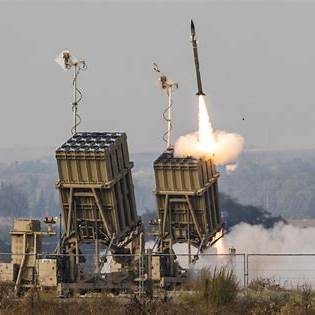Washington, D.C. – Former U.S. President Donald Trump has unveiled an ambitious $19.5 billion plan to revolutionize missile defense with cutting-edge technology, including next-generation interceptors, an upgraded Iron Dome system, Aegis and THAAD enhancements, space-based missile tracking, and high-energy lasers.
The proposal, which is expected to be a centerpiece of his 2024 election campaign, seeks to significantly bolster U.S. and allied defense capabilities against aerial and missile threats from adversarial nations, including China, Russia, Iran, and North Korea.
Key Components of the Plan
1. Next-Generation Interceptors (NGI): The plan prioritizes the deployment of more advanced interceptors capable of neutralizing hypersonic missiles and maneuverable warheads. The NGI program, initially developed under the Missile Defense Agency (MDA), is expected to be fast-tracked with additional funding.
2. Enhanced Iron Dome: Originally developed by Israel and supported by U.S. funding, the Iron Dome system is set for an upgrade that will increase its effectiveness against drone swarms and cruise missiles. The U.S. military has been integrating the system into domestic air defense to protect strategic assets.
3. Aegis & THAAD Expansion: Trump’s plan proposes expanding the Aegis Ballistic Missile Defense system on U.S. naval vessels and further developing the Terminal High Altitude Area Defense (THAAD) system for better coverage against medium- and intermediate-range missile threats.
4. Space-Based Missile Tracking: A core element of the initiative includes deploying new satellite constellations capable of tracking enemy missile launches in real-time. This space-based system would enhance early warning capabilities and improve interceptor accuracy.
5. High-Energy Lasers: The plan includes increased investment in directed energy weapons, such as high-power lasers, which have shown promise in shooting down drones, missiles, and other airborne threats. These systems could provide a cost-effective alternative to traditional missile interceptors.
Strategic and Political Implications
Trump’s proposed missile defense overhaul comes amid escalating global tensions and growing concerns over hypersonic missile advancements by China and Russia. The Biden administration has already been expanding investments in missile defense, but Trump’s plan suggests an even more aggressive approach.
The announcement has sparked debate among defense experts. Supporters argue that the investment is necessary to counter evolving threats, while critics question the feasibility and cost-effectiveness of space-based missile tracking and laser technology.
Funding and Congressional Approval
The $19.5 billion proposal would require congressional approval, and it remains uncertain whether lawmakers will back such a significant increase in defense spending. If approved, the funds would likely be allocated across multiple military programs and defense contractors, including Lockheed Martin, Raytheon, and Northrop Grumman.
Trump’s latest defense proposal signals his continued emphasis on military modernization and deterrence, reinforcing his commitment to strengthening America’s missile defense capabilities amid a shifting global security landscape.


